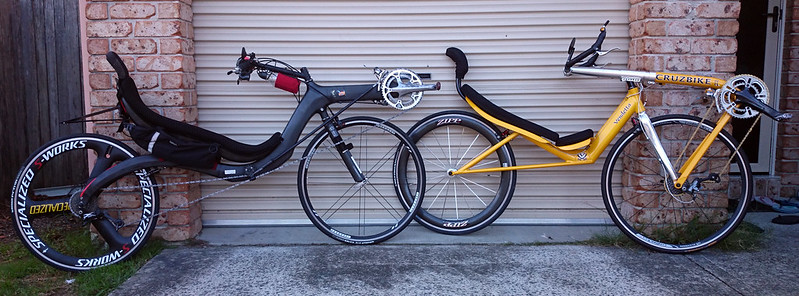Greenspeed
Member
Hello everyone,
Just introducing myself. I have been riding recumbent since 2007. From 2008, solely riding M5 CHR until this April. Bought a new to me Vendetta. Learning to ride Vendetta was interesting. It was a big learning curve for sure. I straight away use a clipless pedals on the Vendetta as I m quite comfortable using clipless on all my recumbent bikes that I had owned previously.
Had one nasty spill earlier in the day when learning to ride Vendetta. I was too confident and that sort of bring me back to reality and respect the diffrence between SWB and MBB FWD. Surprisingly, I was able to ride Vendetta better after my spill.
So far I have clocked more than 500km on Vendetta (probably close to 25,000km on M5). My average has jumped from 21km/hr to 31km/hr this weekend. I am really chuff with the bike and enjoying the experience of being a Vendettanaut.

Just introducing myself. I have been riding recumbent since 2007. From 2008, solely riding M5 CHR until this April. Bought a new to me Vendetta. Learning to ride Vendetta was interesting. It was a big learning curve for sure. I straight away use a clipless pedals on the Vendetta as I m quite comfortable using clipless on all my recumbent bikes that I had owned previously.
Had one nasty spill earlier in the day when learning to ride Vendetta. I was too confident and that sort of bring me back to reality and respect the diffrence between SWB and MBB FWD. Surprisingly, I was able to ride Vendetta better after my spill.
So far I have clocked more than 500km on Vendetta (probably close to 25,000km on M5). My average has jumped from 21km/hr to 31km/hr this weekend. I am really chuff with the bike and enjoying the experience of being a Vendettanaut.



